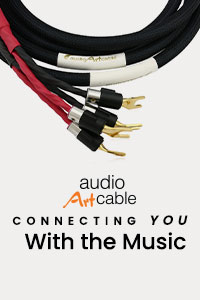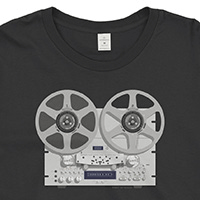SME 3009 Tonearm
 Depending on when you start the counting, last year marked the 50th anniversary of the SME 3009 tonearm. Ignoring both xenophobia on the part of the British and envy on the part of everyone else, it remains the most successful high-end tonearm of all time, and is the template for superior “universal” tonearms able to handle a wide range of cartridges on an equally wide range of “motor units.”
Depending on when you start the counting, last year marked the 50th anniversary of the SME 3009 tonearm. Ignoring both xenophobia on the part of the British and envy on the part of everyone else, it remains the most successful high-end tonearm of all time, and is the template for superior “universal” tonearms able to handle a wide range of cartridges on an equally wide range of “motor units.”
Indeed, many audiophiles still swear by it, and with good reason: Despite it being associated, in the minds of many, with high-compliance moving-magnet cartridges because of strong associations with Shure, it was, in fact, designed with the then-dominant, heavy, low-compliance Ortofon moving-coil cartridges in the SPU series. Moreover, the first headshells used with the 3009—prior to the arrival of the familiar, drilled-out SME design—were Ortofon shells with SME badges on the front. Due to his unfailing honesty and integrity, SME founder Alastair Robertson-Aikman found it mildly disconcerting that the headshell-mounting system became known colloquially as the SME mount; Ortofon deserved the credit.
As a result of the arm’s ability to accept the heavy, low-compliance MCs we so love today, its performance is not that of a 50-year-old arm but of a still-viable contender. That’s the reason why boxed, second-hand examples in mint condition can command $500 at UK audio flea markets. The arm is simply remarkable.
It stayed in production until 2003-04, but not because the superior Series V supplanted it; both models ran concurrently for almost 20 years. The cost difference between an SME Series II Improved and a Series V kept the former in production for its value as an entry-level product. Robertson-Aikman felt the more affordable M2 was its true successor.
After four decades, total sales neared a half-million units. I trust TONE readers will immediately let me know if there’s a separate high-end tonearm that comes anywhere close to that figure. The SME 3009 was, and is, the most popular and influential quality tonearm in history. Even the near-elliptical tonearm cut-out served as the default arm aperture for countless manufacturers that supplied armless decks, from Garrard to Thorens to Technics.
Founded in 1946 by Robertson-Aikman, SME made scale models and parts for the model-engineering trade and hobbyist model builder. Robertson-Aikman, above all an engineer, was also a music lover able to construct his own system. He told me “the Series I precision pick-up arm was envisaged in the autumn of 1958. It came about because my burgeoning interest in hi-fi had reached the point where I was dissatisfied with what the market offered. At that time, the Scale Model Equipment Co Ltd, as SME was then titled, had a useful precision-engineering capability built up over the preceding 12 years. I recall going into the small tool room and asking if we had any aluminium tube.
 “By the spring of 1959, a prototype was in use, and it was decided to show it to the then-Senior Technical Editor of Gramophone Magazine, Percy Wilson, a man of great enthusiasm and some useful ideas.” Asked what he thought of its commercial possibilities, Wilson replied that he and one or two of his friends would like to own one. Crucially, he told Robertson-Aikman, “Perhaps an annual turnover of as many as 1,000 pieces might be possible.”
“By the spring of 1959, a prototype was in use, and it was decided to show it to the then-Senior Technical Editor of Gramophone Magazine, Percy Wilson, a man of great enthusiasm and some useful ideas.” Asked what he thought of its commercial possibilities, Wilson replied that he and one or two of his friends would like to own one. Crucially, he told Robertson-Aikman, “Perhaps an annual turnover of as many as 1,000 pieces might be possible.”
Robertson-Aikman remembers it well: “I particularly recall this estimate because in the week of one of his visits, not so long before he died, we built 1,000 units and were averaging 750 units per week.”
After re-tooling the Series I, by then three years old, Robertson-Aikman replaced it with the Series II in 1962. Instead of a steel arm tube, the Series II used a polished, bright-anodised aluminium arm tube, 9.5mm in diameter with a wall thickness of 0.56mm. The Series II stayed in production for 10 years. “And for much of the time,” Robertson-Aikman notes, “there was a backlog of more than 2,000 units.”
In 1973, SME met the demand for an arm of lower mass than the Series II with the Series II Improved, which also offered, for the first time, a fixed headshell version. All of the same basic family ran for the next 30 years. By 1982, with the sudden burst in popularity of the moving-coil cartridge with lower compliances and higher tracking forces, Robertson-Aikman recalls that “cartridge developments precluded a ‘one size fits all’ philosophy.” It led to the creation of the even more sophisticated Series V.
Common to all are “J”-shaped arm tubes, the methods of applying tracking force, fully-protected ball-races for the vertical axis, and 0.13mm-radius knife-edge bearings in chrome seatings for the horizontal axis. Precision is such that accurate tracking force up to 1.5g can be applied without a tracking-force gauge. Two counterweights were available, of 64g and 77g, allowing the use of very heavy cartridges, up to 32.5g. SME employed a hanging weight on a thread to set adjustable bias corresponding with tracking force, via notches on a rail. One popular option was the FD200 fluid damper for the Series II and later models. Users delighted in the most coherent and thorough owner’s manuals ever seen in audio, as well as niceties such as a baseplate that allowed the arm to slide forward or back for set up with a supplied protractor. All of the arms were fitted with damped cueing devices, and VTA was easily set thanks to the adjustable arm height.
Collectors know the SME 3009 enjoyed numerous variants, especially the 3012 12-inch model. But others exist to tantalize completists. The original 9-inch 3009 is identified by enthusiasts as 3009/1 or 3009/2 to indicate which model series is which, as well as “3009 Series II Improved.” Then you have fixed headshell or removable; a Japanese version that’s 10 inches in length from pivot to stylus; gold-plated limited editions; variations in the form of cable connectors; choices of counterweights; and confusion in the US, where some called the 3012 a “16-inch” arm because it included the counterweight and headshell.
 Half a century later, SME 3009 arms are cherished with an intensity matched by few other vintage components: the Quad “57” electrostatic, the McIntosh MC275, Marantz tube amps, and Revox’s G36 spring to mind. But, as Stereophile icon J Gordon Holt once said, “You never forget your first SME.” -Ken Kessler
Half a century later, SME 3009 arms are cherished with an intensity matched by few other vintage components: the Quad “57” electrostatic, the McIntosh MC275, Marantz tube amps, and Revox’s G36 spring to mind. But, as Stereophile icon J Gordon Holt once said, “You never forget your first SME.” -Ken Kessler
Official Factory Production Statistics
Series I: 1959-1963, approximately 10,000 built
Series II: 1963-1973, approximately 180,000 built
Series II Improved: 1973-2003, 260,484 built
Publisher’s Note: For those wanting to restore their 3009 to (and even beyond) its original glory, look no further than smetonearms.com. The site has the world’s largest cache of NOS SME parts and will restore your arm with loving care.





